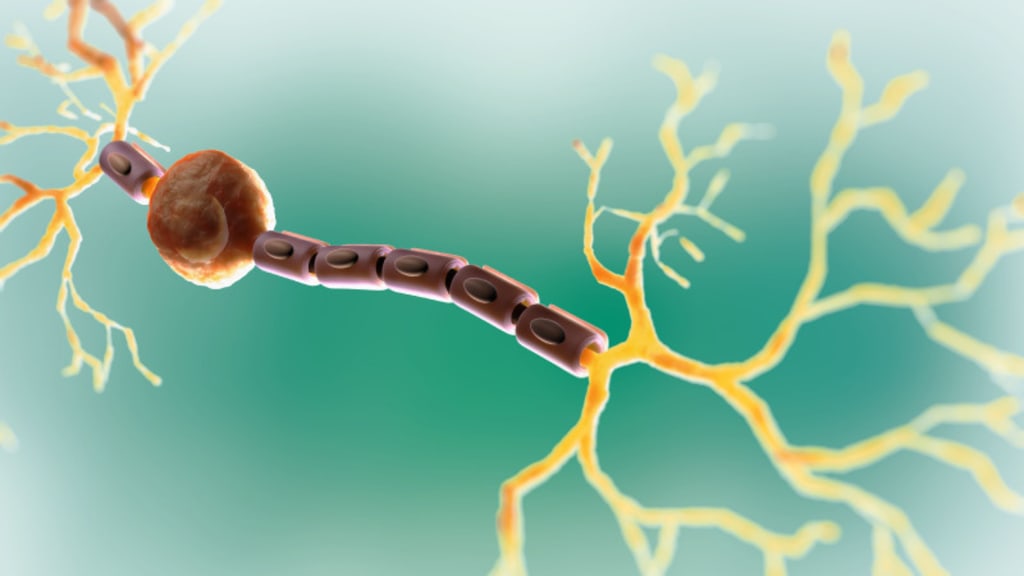Content warning
This story may contain sensitive material or discuss topics that some readers may find distressing. Reader discretion is advised. The views and opinions expressed in this story are those of the author and do not necessarily reflect the official policy or position of Vocal.
CANAVAN DISEASE
CAUSES, SYMPTOMS AND TREATMENT OPTIONS

Canavan disease is a rare and severe genetic disorder that affects the nervous system. It results from a deficiency of an enzyme called aspartoacylase, leading to the accumulation of a substance called N-acetylaspartic acid (NAA) in the brain. This accumulation damages nerve cells, causing neurological symptoms such as developmental regression, intellectual disability, and loss of motor function. There is currently no cure for Canavan disease.
Canavan’s disease affects your brain’s white matter, a rare genetic disorder. There are a lot of complications when it’s the infantile type. It can even result in untimely death. The juvenile type of Canavan disease presents only mild symptoms, such as developmental delays.
As a diagnosis, DNA tests effectively detect if an individual has this genetic disorder. There are a few tests that can even tell if your baby has Canavan disease or not before their birth. This disorder occurs when your brain becomes such as a sponge lacking an important chemical. The brain stops functioning properly due to the lack of that chemical.
Types of Canavan Disease
Canavan disease is a part of Leukodystrophies, another disease group. This group has disorders affecting the brain, nervous system and spinal cord. They are extremely rare genetic disorders, and they get worse as time passes.
Canavan disease typically happens during infancy or early childhood. The most severe is the infantile type. Infantile Canavan disease is also very uncommon, and babies suffering from this disease in their infancy have a shorter life expectancy as they are likely to die in their childhood or adulthood.
The less common is the Juvenile Canavan disease. The symptoms are milder, and children affected by this disease don’t have a shorter life expectancy.
Causes and Risk Factors of Canavan Disease
Canavan disease is a genetic disorder, which means it can only be inherited from the parents. The gene which makes the ASPA enzyme or the aspartoacylase enzyme gets mutated, and Canavan disease occurs. The aspartoacylase enzyme breaks down the NAA or N-Acetyle aspartate, which breaks down a specific brain chemical.
People who are suffering from Canavan disease don’t get enough N-Acetyle aspartate or aspartoacylase enzyme buildup in the brain tissue. It damages the white matter of the brain, which is the myelin. Myelin is a fatty substance that forms an insulating layer around nerve fibres, facilitating the efficient transmission of nerve impulses.
As time progresses, the damage to the myelin causes the brain to sustain harm and become more such as a spongy tissue. It also builds up small fluid-filled spaces in that spongy tissue-like brain. This hinders the process of properly sending and receiving signals from the nerves.
Symptoms of Canavan Disease
The infantile Canavan disease has various complicated symptoms which usually occurs between the age of 3 and 6 months, and they are —
Vision loss
Muscle spasms
Difficulty in swallowing or eating
Hearing loss
Macrocephaly – abnormally enlarged head and brain (very difficult to control)
Intellectual disability
Weak or stiff muscles, atypical muscle tone
Developmental delays
Lack of control in motor skills
Expressing little emotion or interest
Unresponsive behaviour
Children with infantile Canavan disease become worse very quickly and reach their untimely death by the time they are 10 years old. They have difficulty sitting, walking, eating or crawling, and they lack control of motor skills, which means they have less control over their muscle movements.
People who have the Juvenile type of Canavan disease only suffer mild developmental delays. They may have speech problems and difficulty learning in a typical school environment.
Treatment of Canavan Disease
There is no cure for Canavan disease, but the symptoms can be managed through some treatments. Feeding tubes for proper nutrition and medication to control epileptic episodes, i.e. anticonvulsants and to improve communication and posterity, one can opt for physical therapy. The family can understand the risk of Canavan disease better if they do genetic counselling and genetic testing.
Physical and Occupational Therapy: These therapies aim to maintain mobility and improve daily functioning.
Speech and Language Therapy: For individuals with speech and communication difficulties.
Medications: Symptomatic treatment, including medications to manage seizures or muscle stiffness.
Assistive Devices: Mobility aids, communication devices, and adaptive equipment to enhance quality of life.
Respiratory Support: Interventions may be needed to address respiratory issues that can arise in the later stages of the disease.
Regular Monitoring: Routine assessments to track the progression of the disease and adjust treatment accordingly.
About the Creator
Enjoyed the story? Support the Creator.
Subscribe for free to receive all their stories in your feed. You could also pledge your support or give them a one-off tip, letting them know you appreciate their work.





Comments
There are no comments for this story
Be the first to respond and start the conversation.